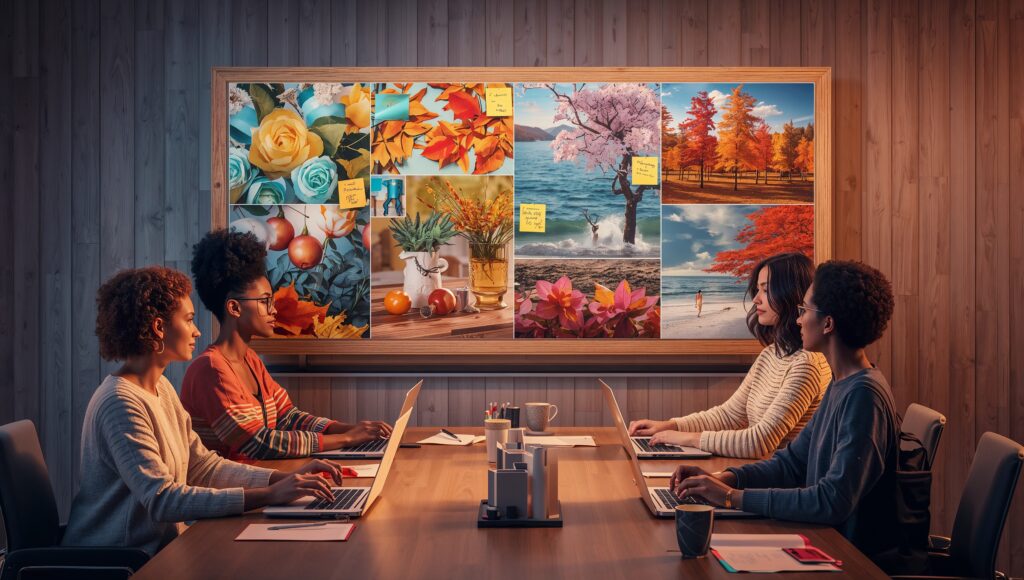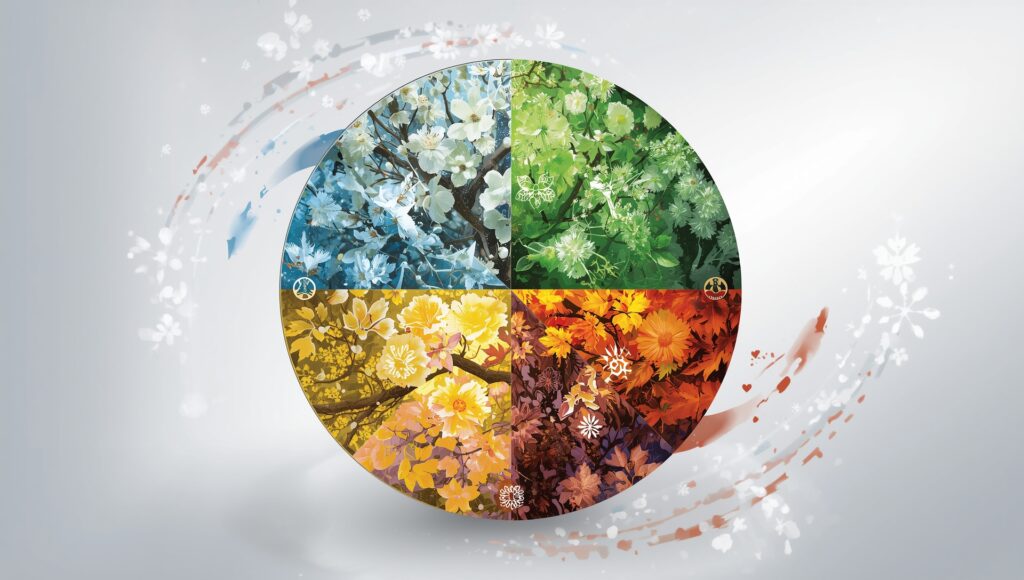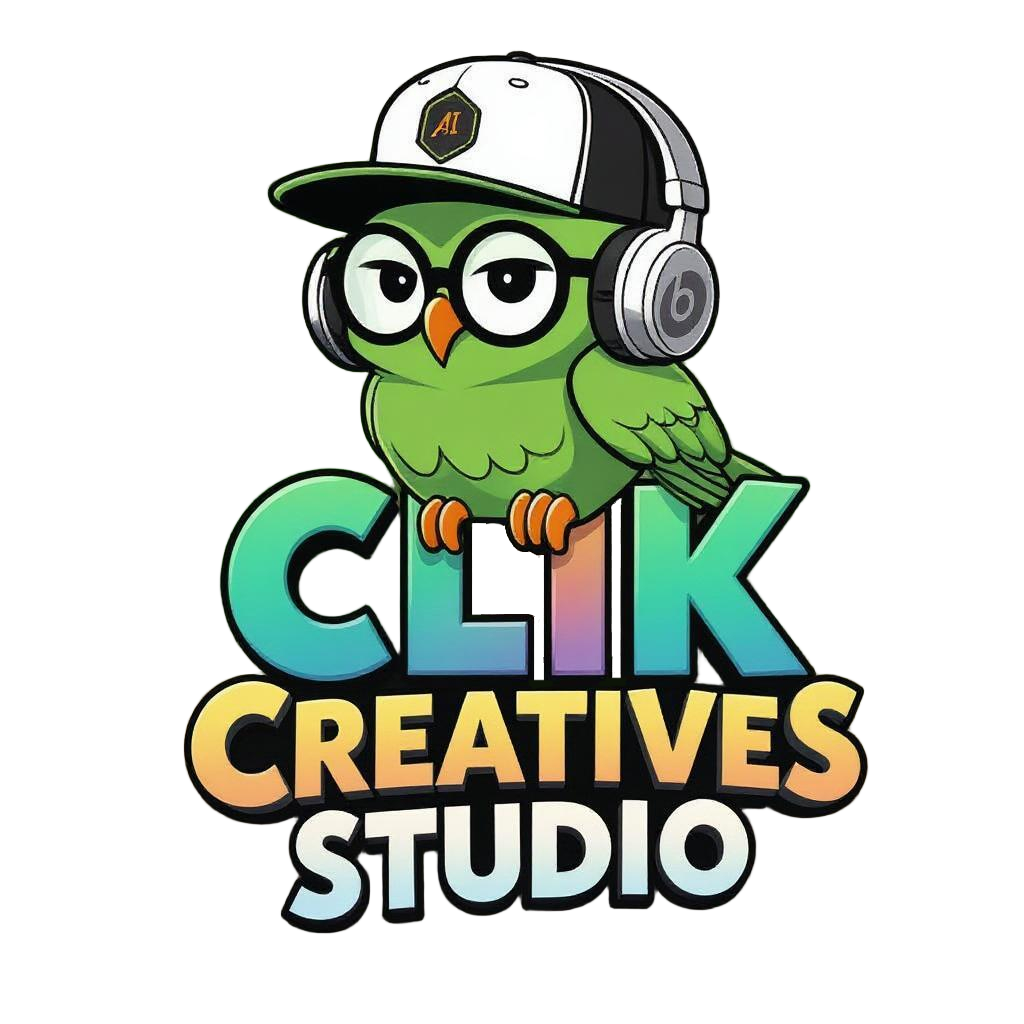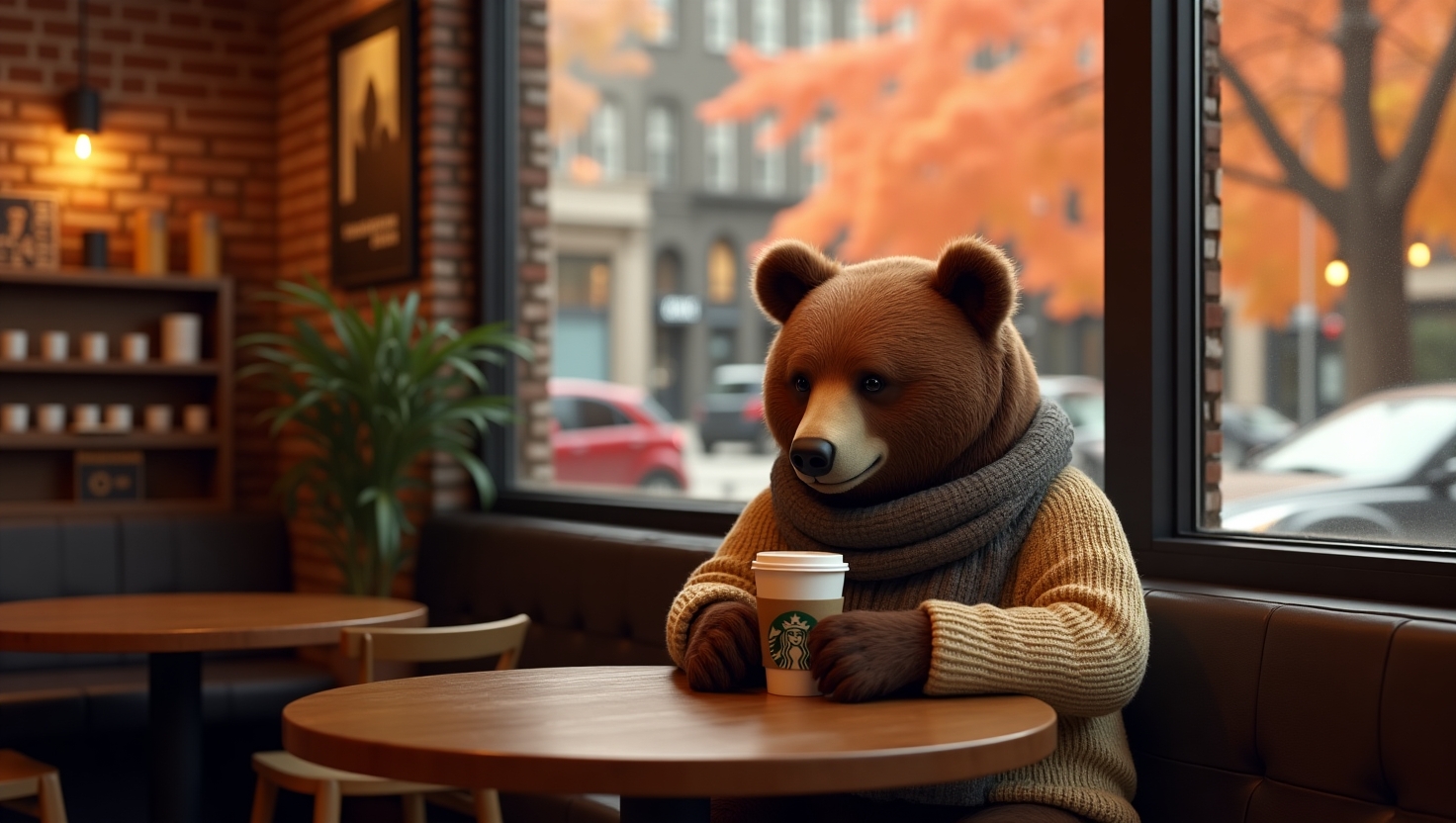What Is Seasonal Design?
Seasonal design is more than just swapping pumpkins in October or rolling out red and green in December. At its core, seasonal design is the intentional practice of adapting your brand’s visuals and messaging to align with seasons, holidays, or cultural moments.
That can mean shifting color palettes, updating imagery, adding subtle icons, or weaving seasonal emotions into your campaigns. Done well, seasonal design signals to your audience that you’re tuned in, present, and ready to connect.
Think about how recognizable these seasonal visuals are:
- Starbucks holiday cups — iconic red, instantly shared on social media.
- Google Doodles — playful and relevant to global or local moments.
- Retail window displays that transform with every season.
These aren’t just pretty updates. They’re deliberate design strategies that connect with emotions, spark engagement, and reinforce brand presence.
In a world where audiences scroll at lightning speed, ignoring seasonal cues can make your brand feel stale. Embracing seasonal design, on the other hand, helps you show up as fresh, relatable, and culturally aware.

The Emotional Power of Seasonal Design
Why does seasonal design matter so much? Because humans are wired to notice and respond to change.
Seasons create cycles of anticipation. We look forward to spring blossoms after a gray winter. We embrace cozy sweaters and pumpkin spice when autumn arrives. Brands that mirror these rhythms feel more aligned with their audiences.
- Nostalgia in Autumn: Warm tones, falling leaves, and cozy imagery instantly bring back memories of comfort, family, and tradition.
- Excitement in Summer: Bright colors, beach visuals, and vibrant tones capture feelings of freedom and energy.
- Renewal in Spring: Fresh pastels, blooming flowers, and light textures symbolize new beginnings.
- Reflection in Winter: Calm blues, snowflakes, and festive lights tie to comfort and togetherness.
Colors and motifs trigger moods. Fireworks signal celebration. Pastels feel soft and hopeful. Golds and reds scream holiday cheer. The psychology behind seasonal design is about tapping into these collective emotions to make your brand feel connected to real life.
Netflix has even experimented with thumbnail variations that reflect seasonal moods, showing how subtle design tweaks can influence click-through rates. If audiences respond more positively to warm autumnal tones in October, why not lean into it?
Seasonal design isn’t just a visual strategy; it’s an emotional strategy.
Why Seasonal Design Matters for Brands
Seasonal design matters for brands of all sizes — from Starbucks to your local coffee shop — because it:
1. Keeps Your Brand Relevant
Audiences notice when a brand stays stuck in the same look forever. A website or Instagram feed that hasn’t shifted in years feels outdated. Seasonal tweaks show that you’re alive, aware, and evolving with the world around you.
Brands that ignore this can unintentionally appear stagnant. Imagine scrolling through a site in December that looks identical to July — no festive energy, no nod to the season. It feels disconnected.
2. Builds Emotional Connections
Seasons carry emotions, and seasonal design taps into them. Autumn is nostalgic, summer is exciting, and winter is comforting. By reflecting these moods in your design, you show audiences that you understand them.
Hallmark built its empire on seasonal emotional resonance. People don’t just buy cards; they buy moments tied to memory and tradition.
3. Boosts Engagement & Urgency
Seasonal campaigns are naturally limited-time. Visual cues like falling leaves, snowflakes, or fireworks create urgency: “This look, offer, or vibe won’t last forever.” That urgency drives clicks, shares, and conversions.
Think about Oreo’s seasonal packaging releases. Limited-edition flavors tied to holidays often sell out quickly. Design plays a huge role in amplifying that scarcity.
4. Demonstrates Creativity & Flexibility
Refreshing your visuals shows your brand has range. It keeps content from feeling monotonous and allows you to showcase different sides of your personality — playful in summer, reflective in winter, bold in spring.
Designers use seasonal updates as creative sprints, a way to push boundaries without completely overhauling brand identity.
5. Aligns With Consumer Behavior
Consumers behave differently by season. Back-to-school shopping, Black Friday, New Year’s resolutions — each season drives unique behaviors. Seasonal design puts your brand in sync with those natural cycles.
A fitness brand aligning its visuals with January’s “new year, new you” rush feels intuitive. A travel company featuring beaches in summer or cozy cabins in winter fits perfectly with consumer intent.
By ignoring seasonal design, brands risk missing out on natural waves of engagement that audiences already expect.

How Seasonal Design Shows Up Everywhere
Seasonal design isn’t locked to just one medium — it stretches across industries and platforms.
- Websites: Swap out hero images, banners, or accent colors. Even subtle changes like falling snow animations or spring blossoms in the background keep your site fresh.
- Social Media: Rotate cover photos, update highlights, and run themed campaigns. Seasonal hashtags amplify reach.
- Packaging: Limited-edition packaging is powerful. Coca-Cola’s Santa cans or Oreo’s themed cookies prove consumers love collecting seasonal variations.
- Content Marketing: Blogs, carousels, and videos tied to seasons rank better and get shared more. Think “10 Winter Wellness Tips” or “Spring Cleaning Checklist.”
- Retail Spaces: Physical spaces shine during seasonal swaps — new displays, scents, and décor immerse customers in the moment.
Even SaaS companies can use seasonal design by tweaking dashboards, adding festive icons, or creating limited-time campaign visuals.
Case Study: Brands That Nail Seasonal Design
Coca-Cola’s Holiday Campaigns
Few brands embody seasonal design like Coca-Cola. Every December, they roll out iconic holiday packaging and ads featuring Santa Claus, polar bears, and glowing red trucks.
Why it works:
- Consistency: Consumers expect the Coca-Cola holiday look each year.
- Emotional Resonance: The imagery ties into joy, tradition, and togetherness.
- Cross-Channel Execution: From packaging to billboards to experiential campaigns like holiday trucks.
Starbucks’ Red Cups
The annual return of Starbucks’ red cups has become a cultural moment. Customers anticipate it, share it on Instagram, and treat it like the official start of the holiday season.
It’s a simple seasonal design — cup patterns and colors — but it fuels massive engagement.
Google Doodles
Google updates its homepage doodle for everything from global holidays to awareness campaigns. These micro-seasonal updates show attentiveness and keep the brand playful.
Smaller brands can take inspiration here: pick one or two seasonal touchpoints and repeat them yearly. Consistency builds recognition and anticipation, even on a small scale.
👉 Related: Just like when I pivoted from hospitality to build a digital business, consistency mattered more than perfection. The same applies to seasonal design.
Benefits for Small Brands & Creators
You don’t need a Fortune 500 budget to win with seasonal design. In fact, small brands may see even bigger benefits.
- Stand Out: Many competitors overlook it. A small seasonal tweak can instantly make you look more polished.
- Engage More Deeply: Audiences notice change — seasonal updates give them a reason to interact.
- Stay Memorable: Regular seasonal shifts make your brand something audiences look forward to.
- Stretch Creativity: For solo creators, it’s an easy way to refresh without reinventing.
Examples:
- A local coffee shop is swapping signage with autumn leaves.
- A creator updating Instagram highlight covers for each season.
- A small e-commerce shop adding seasonal stickers or inserts to packaging.
For small players, seasonal design is a simple, cost-effective way to punch above your weight.
Tools That Make Seasonal Design Simple
Seasonal design doesn’t require a full design team. These tools make it accessible:
- Envato Elements: Templates, fonts, stock footage, and graphics for every season. Perfect for seasonal videos and motion graphics.
- Leonardo AI: Generate custom seasonal illustrations, branded visuals, or product mockups with prompts.
- OpenArt AI: Experiment with multiple models and art styles to create seasonal variations.
- Canva: Thousands of seasonal templates for social posts, ads, and covers.
- Stock Libraries: Pexels, Unsplash, and Freepik offer seasonal image packs and icons.
- Notion + CLIK Content Calendars: Plan campaigns months ahead.
- CLIK Creatives Services: We help brands roll out AI-enhanced seasonal design workflows to keep them ahead of trends.
👉 Explore seasonal-ready assets with Envato Elements or experiment with Leonardo AI for custom visuals that match your brand’s identity.

Tips and Pitfalls
Tips for Success:
- Plan Ahead: Don’t design your holiday campaign on December 20. Plan months in advance.
- Stay Consistent: Keep your logo and brand identity intact while adding seasonal flair.
- Be Subtle: Sometimes a small accent works better than a full redesign.
- Test & Track: Measure engagement to learn what worked for next year.
- Respect Diversity: Use broad seasonal themes if your audience is global.
Common Pitfalls:
- Overdoing it → Seasonal graphics overshadow core brand.
- Inconsistency → Random seasonal updates confuse audiences.
- Generic Assets → Everyone using the same free pumpkin stock photo doesn’t stand out.
Think of seasonal design as seasoning in a recipe — too little, and it’s bland; too much, and it’s overpowering.
Next Season Starts Now: Make Design Work for You
Seasonal design isn’t about decoration — it’s about connection. By aligning your visuals with the rhythms of the year, you show your audience you’re present, relevant, and tuned in to their world.
Big brands like Coca-Cola, Starbucks, and Google use seasonal design to build anticipation and deepen loyalty. Smaller brands and creators can use the same principles to stand out, engage audiences, and spark joy.
The next season is always around the corner. The question is: will your brand look the same, or will it evolve to meet the moment?
👉 Want help mapping out a seasonal design strategy for your brand? Book a free consultation with CLIK Creatives Studio, and let’s keep your visuals fresh year-round.


